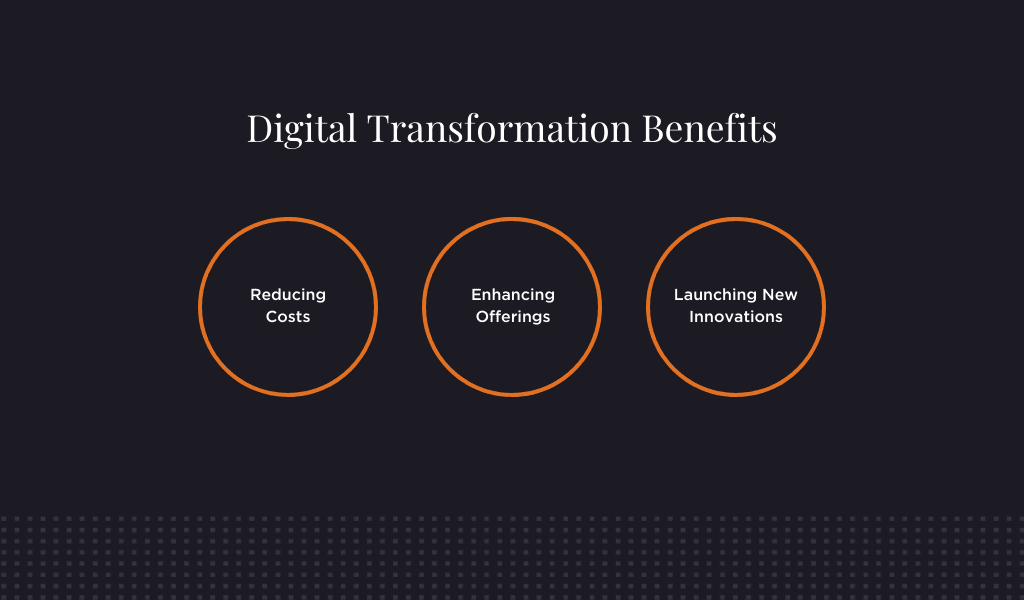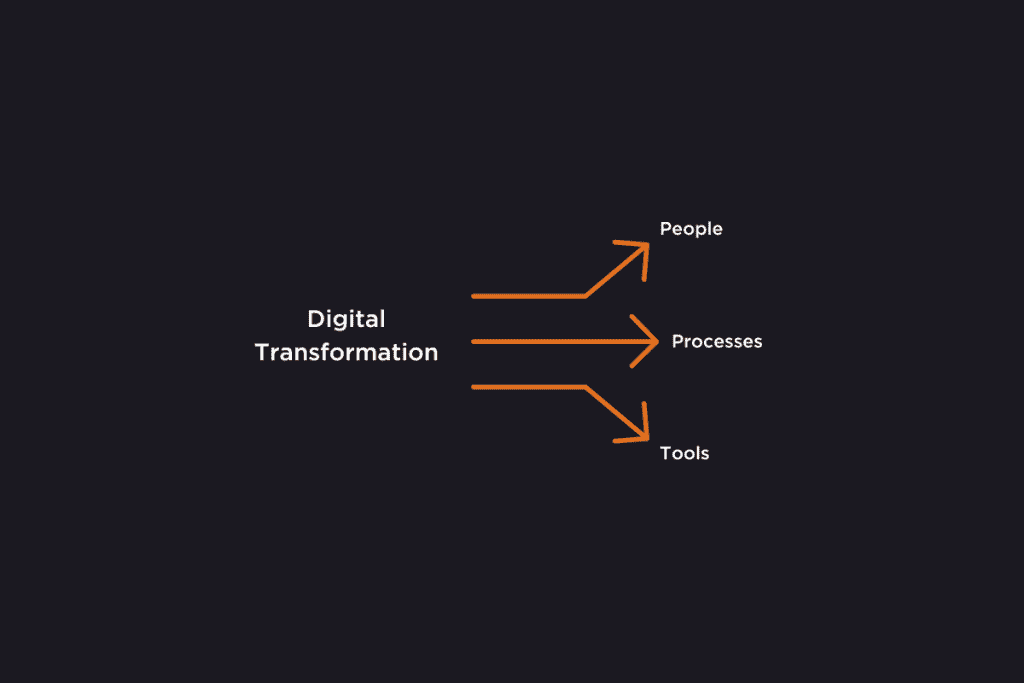Economic downturn offers a huge opportunity to companies that are ready to take advantage of it. But digital transformation during a recession isn’t without its challenges – it demands the right digital strategy. Only with the right approach can companies outperform and create advantages that last long beyond the upcoming recession.
The threat of a recession looms overhead for many senior leadership teams. Interest rates are rising. Credit has never cost more. Supply chains still face major disruption. Three years on, the uncertainty of Covid lingers on.
But despite the clear and present challenges, temporary downturns offer up the opportunity to create long-lasting competitive advantages through disruptive innovations.
To capitalise on these opportunities, leaders have to approach digital transformation initiatives as part of a larger digital business strategy piece – one that’s tied to clearly defined and tangible business outcomes.
To come through these challenges and the surrounding uncertainty in a better position, the right digital transformation initiatives, tools, and technologies are desperately needed.
The Benefits of Digital Transformation During a Recession

Reduce Costs
Ahead of a recession, many of your internal conversations will centre around cost-cutting. And many of the ideas raised will be short-term, short-sighted gains that limit your growth in the long run.
This is what separates the companies that survive a recession from those that thrive. According to Gartner research, a key factor of successful companies that outperform during a recession is that they manage to balance top and bottom-line growth.
High-performing companies understand that focusing on cost-cutting during a recession is short-sighted. Because when all you do is cut costs, you put yourself in a weaker position. So, when demand returns – which it will – you can’t keep pace with it.
Instead, investing in the right technology now can create cost reductions that last long beyond the recession and create permanent efficiency advantages over the competition.
Enhance Your Existing Offering
If you’re not improving, you’re falling behind. If you’re not shipping, you’re dead. This doesn’t stop being true in a recession. But at the same time, just adding features and enhancements to your product or service offering isn’t the answer. You have to make meaningful changes that add real value.
To understand where you can enhance your existing offering, you need the right data to hand. You need to understand who your user personas are, the user journey they embark on, and the highs and lows throughout where you can make those meaningful changes.
Gathering this valuable information will help you to uncover low-effort, high-impact enhancements to your offering that delight your users.
Launch New Innovations
Even when the economy is in recession, people and companies still want to feel like they’re moving forward and making progress. 45% of product launches are delayed by at least a month. But the longer it takes for a new product to reach the market, the more investment is required and the shorter its lifespan.
While others withdraw or pause their digital transformation efforts and delay product launches, it’s the perfect time to reevaluate your offering. Identify the opportunities where digital transformation can create a new channel to improve your customer experience or boost employee engagement.
The right product or service – something that breaks new grounds – delivered at pace can win you new customers and retain existing ones. Meanwhile, the competition that withdraws will only lose market share and reputation long term.
Challenges of Digital Transformation During a Recession
Securing Investment & Resources
Ahead of and during a downturn, securing the investment and internal resources required to make meaningful changes to your business and its offering isn’t easy. Budgets are under close scrutiny and there’s an emphasis on cost-cutting instead of investing in the long-term.
To secure buy-in, you need an ironclad business case for digital transformation during a recession. You have to prove that the initiative will have a tangible impact on the most important metrics for your business.
Pairing a product discovery phase with design sprints is a low-risk and cost-effective way to build a strong business case for your digital transformation project. You can prove the value in your proposed product without investing a significant amount of time and resources.
Dealing with Legacy Infrastructure
The larger your company is, the more legacy infrastructure there will be to deal with during your digital transformation journey. This is why it’s so important to understand the effort attached to transforming the different elements of your business.
The quickest wins are in those areas where you can either add to or build on top of existing infrastructure – where you don’t have to replace or rebuild the underlying tools and technologies.
Whether you can avoid it or not, having a crystal clear picture of your infrastructure is mission-critical. Far too often, the specifics and quirks of different systems are locked away in knowledge silos. When individuals leave, the knowledge of what’s keeping everything working leaves with them.
Mapping out your tech stack and documenting its inner workings helps you understand where you can make enhancements or replacements and the effort associated with doing it. It shows you where the quickest wins are by highlighting the products, services, and technologies that provide the lowest Return on Investment (ROI) and are the easiest to fix.
Involving Your Workforce
Digital transformation is change management. Change management is about people – your people. The biggest challenge, which your initiatives will live or die on, is securing buy-in from your wider workforce.
Solutions built in isolation and made mandatory by leadership always meet the most resistance. They don’t get used. They often add extra time, effort, and friction to already imperfect experiences. They don’t provide a return on technology.
Why? Because they’re built without involving the people they’re built for. If you want to build the right thing that creates value that outlasts the recession, you have to involve your users from the very beginning and keep collecting feedback at every subsequent development stage.
How to Outperform in a Recession

The key to outperforming in a recession is not to respond to the downturn. Instead, successful companies are those that are aligned internally on what matters the most. They then use this to choose the right balance of long and short term initiatives which they commit to them before the downturn. This allows them to power through without changing direction every quarter.
You must be proactive, not reactive. To achieve this, you first have to align everyone behind a common vision for the future of your customer and employee experience. A lack of alignment, particularly when dealing with limited resources, can spread you too thin. Understand where you want to move the needle and the North Star Metric that you want everyone to focus on.
Once you have this context, you can radically challenge the workflows and processes that could be faster, simpler, and more agile.
Build a Recession-Proof Roadmap
If you’re exploring how the right digital transformation initiatives can help you emerge from the upcoming recession in a better position, our discovery workshop is the right place to start.
We begin by carrying out in-depth user research to understand the people and processes present throughout your company. This valuable information frames a full day of exercises with your key decision makers which is designed to identify the right solution: a custom-built product that helps your business and your users achieve their goals.
Following this, we build out a roadmap with clear timelines, deliverables, and milestones that prioritises creating the most value for you and your users first.